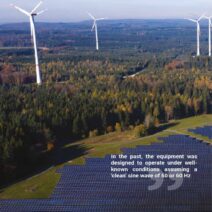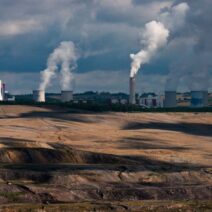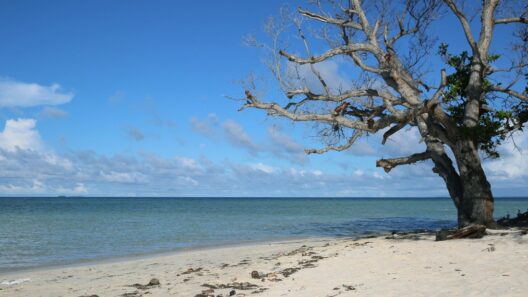Global warming is often perceived as a phenomenon that solely leads to increasing temperatures and melting glaciers. However, it may come as a surprise to many that it can also result in record cold weather in certain regions. This paradoxical scenario is not merely an anomaly; it is a consequence of complex climatic interplays induced by human-induced climate change. Understanding the science behind this occurrence requires a multifaceted examination of atmospheric dynamics, oceanic influences, and the overall climate system.
To discern how global warming can lead to cold weather extremes, one must first comprehend the fundamental workings of Earth’s climate. Climate is not static; it is a dynamic system governed by intricate interactions between the atmosphere, oceans, land surfaces, and ice. Among these, the polar regions play a significant role. They serve as the Earth’s cooling system, and even slight alterations in their climate can reverberate across the globe.
One pivotal concept to consider is the polar vortex. This term refers to a vast area of low pressure and cold air surrounding the Earth’s poles. Typically, this vortex remains stable, confining frigid air to the Arctic region. However, when global temperatures rise, this equilibrium is disrupted. Warming temperatures can weaken the polar vortex, allowing cold air to drift southward into mid-latitude regions, including parts of Europe and North America. This phenomenon can lead to extreme cold spells, snowfall, and harsh winter conditions, even in areas accustomed to milder winters.
Another contributing factor is the phenomenon known as Arctic amplification. This refers to the accelerated warming observed in the Arctic compared to the global average. As ice and snow melt—a direct consequence of rising temperatures—less sunlight is reflected back into the atmosphere. Instead, more heat is absorbed by the dark ocean waters or land surfaces. This disruption generates changes in atmospheric circulation patterns, often resulting in more volatile weather systems. Consequently, some areas may experience significant temperature drops while others may face record warmth.
The interaction between ocean currents and atmospheric conditions further complicates the relationship between global warming and record cold weather. Ocean currents, such as the Atlantic Meridional Overturning Circulation (AMOC), act as conveyors of heat across the globe. Disruptions to these currents due to melting polar ice or changes in temperature gradients can produce profound shifts in weather patterns. Regions dependent on warm ocean currents may experience uncharacteristically chilly weather, providing another layer to the increasingly intricate web of climate dynamics.
In tandem with these physical mechanisms, it is critical to acknowledge the role of climate variability. Decadal oscillations, such as El Niño and La Niña, can dramatically influence regional weather patterns. These oscillations can exhibit interactions with climate change in unpredictable ways. For instance, during a La Niña event, the effects of global warming might be tempered in certain locations, while other regions may be thrust into severe cold. Such complexity demonstrates that climate change is not a linear trajectory but a multifactorial one that engenders diverse climatic outcomes.
Moreover, there is a psychological aspect to the intersection of global warming and cold weather. Public perception often struggles to reconcile the idea of a warming planet with the experience of extreme cold. This cognitive dissonance can lead to climate skepticism, emphasizing the necessity for clear communication regarding climate science. It is vital for stakeholders, including scientists, policymakers, and educators, to clarify that short-term cold spells do not negate long-term warming trends. Instead, they exemplify the unpredictable nature of our climate system.
In an age where communication is instantaneous and widespread, understanding nuanced scientific concepts is more crucial than ever. Public engagement in climate science discourse can lead to increased support for policies aimed at mitigation and adaptation. Recognizing the complexities of climate change is an essential step towards fostering a more informed and proactive global community. Discrepancies between local weather events and long-term climate trends should be approached with an educational lens rather than skepticism.
As the scientific community continues to unravel the intricacies of weather phenomena, it is imperative to acknowledge that mitigation efforts must include comprehensive strategies addressing both the causes and consequences of climate change. While immediate impacts, such as extreme cold weather events, require adaptive measures at local and national levels, long-term sustainability hinges on a commitment to reducing carbon emissions and transitioning to renewable energy sources.
In conclusion, the relationship between global warming and record cold weather is a testament to the complexity and interconnectivity of our climate system. From the destabilization of the polar vortex to the effects of ocean currents and climate variability, the science illustrates that global warming can indeed coincide with extreme cold events. Understanding these dynamics is essential for informed public discourse, effective policy-making, and fostering resilience in the face of climate change. As we confront our environmental challenges, embracing the multifaceted nature of climate science will enable us to forge a path towards a sustainable future.







